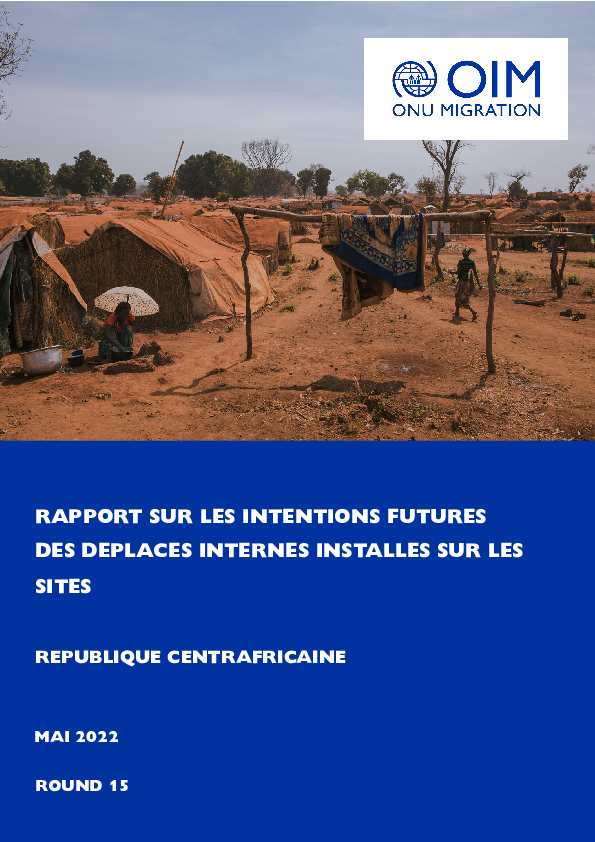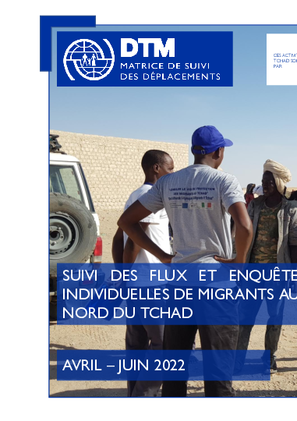-
Countries
-
Data and Analysis
-
Special Focus
-
Crisis Responses

Contact
DTMMozambique@iom.int
Language
English
Location
Mozambique
Period Covered
Sep 15 2022
Sep 20 2022
Activity
- Mobility Tracking
- Event Tracking
During the reporting period (15 to 20 September 2022), a total of 103 movements were recorded - 74 arrivals (2,535 individuals), 19 departures (605 individuals), 1 transit (4 individuals), and 9 returns (959 individuals). The largest arrival movements were recorded in Metuge (1,064 individuals), Quissanga (547 individuals), and Mueda (315 individuals). The largest departure movements were recorded in Montepuez (302 individuals) and Metuge (110 individuals). Only one transit movement was observed in Namuno (4 individuals). The largest return movements were observed from Montepuez (788 individuals) to Mocimboa da Praia and within Palma (86 individuals). Of the total population, 33 per cent of mobile groups were displaced for the first time, 34 per cent for a second time and 33 per cent were displaced at least three times.
Contact
DTMDRC@iom.int
Location
Democratic Republic of the Congo
Activity
- Mobility Tracking
- Baseline Assessment
Period Covered
Jul 05 2022 -Jul 25 2022
A baseline assessment is a sub-component of mobility tracking. It aims to collect data on IDP, migrant or returnee population presence in a defined administrative area of the country.
Population Groups
Survey Methodology
Unit of Analysis Or Observation
Type of Survey or Assessment
Keywords
Geographical Scope
Administrative boundaries with available data
The current dataset covers the following administrative boundaries

Contact
DTM Nigeria, AllUsersInDTMNigeria@iom.int
Language
English
Location
Nigeria
Period Covered
Aug 01 2022
Aug 31 2022
Activity
- Event Tracking
In Nigeria, transhumance is an established practice among cattle herders to overcome the constraints of the dry season, diseases and conflicts in the upper Sahel region. In recent years, competing claims to natural resources have grown with reports of violent clashes between farmers’ and herders' communities in the Adamawa state of Nigeria. The conflicts between farmers and herders' communities are compounded by factors such as population growth, expanding human settlements, land privatization, year-round farming, environmental degradation, weakened traditional conflict resolving mechanisms and climate change.
The community focal points and key informants collect information on alerts relating to transhumance activities and movements in Adamawa state, to support the Transhumance Tracking Tool (TTT) Early Warning System as a component of the IOM's Displacement Tracking Matrix (DTM). This report presents TTT Early Warning data collected in August 2022 in five LGAs of Adamawa State (Demsa, Girei, Lamurde, Numan and Mayo-Belwa). During this period under review, 295 alerts were recorded, including 263 events (89%) and 32 movements (11%). Events alerts include agro-pastoral conflict, intra-and inter-community tensions, Kidnappings, robberies, accidents, and attacks, disasters due to natural hazards, farm destruction, livestock theft, cattle rustling, etc. The highest number of alerts was recorded in Demsa LGA (27%), followed by Girei LGA (26%), Lamurde LGA (17%), Mayo-Belwa LGA (16%) and Numan LGA (14%). Disaggregated data at the ward level suggested that Gereng ward in Girei LGA and Ndikong ward in Mayo-Belwa LGA recorded high numbers at 10 per cent and 6 per cent of the total event alerts in August 2022, respectively.
Some conflict-prone potential risk areas were identified for the month under review in Demsa, Fufore, Jada, Madagali, Maiha, Mayo-Belwa, Numan, Shelleng and Yola South LGAs. These potential risk areas are identified through monitoring transhumance movements and the TTT early warning platform.

Contact
DTM Sudan; dtmsudan@iom.int
Language
English
Location
Sudan
Period Covered
Jan 01 2022
Sep 22 2022
Activity
- Mobility Tracking
- Event Tracking
The Rainy Season in Sudan typically occurs on an annual basis with greatest concentration between the months of June and September. In 2021, all flooding EETs were implemented between the month of July and September. In 2022, DTM Sudan first implemented its EET to monitor flooding taking place in At Tadamon locality, South Kordofan in May. The need for the implementation of a flooding EET this early in the year reflects the fluctuating raining patterns across Sudan, particularly across the water basins of the two Nile rivers.
The information provided reflects published data collected by DTM Sudan’s Emergency Event Tracking tool up to 22 September 2022. Data collection exercises covering the Rainy Season remain ongoing with the rates of displacement data expected to decrease gradually as the rainy season is beyond its peak. Many localities still remain inaccessible to the humanitarian community due to the extreme weather patterns.

Contact
DTM Nigeria, AllUsersInDTMNigeria@iom.int
Language
English
Location
Nigeria
Period Covered
Sep 12 2022
Sep 18 2022
Activity
- Mobility Tracking
- Event Tracking
On 12 September, armed bandits reportedly attacked the communities Gidan Illo in Magaji Gari ward and Baruda in Bardoki ward. Both communities are located in Gummi LGA in Zamfara state. The attacks affected 553 individuals and led to the displacement of 551 individuals from their repective communities to Government Unity School Camp in Shiyar Rafi ward, also in Gummi LGA. As a result of the attacks, 2 fatalities and 20 injuries were reported.
Also, on 13 September, armed bandits reportedly attacked Duddai community in Birnin Magaji ward of Gummi LGA in Zamfara state. This attack displaced 396 individuals from their community to Gummi Primary School in Magaji Gari ward of Gummi LGA. As a result of the attack, 2 injuries were reported.
On 17 September, floods caused by heavy rainfall were reported in the Tudun Matawalli community in Wakili Kudu III ward of Katsina LGA and Matalawa community in Agayawa ward of Ingawa LGA in Katsina state. This affected 609 individuals who were displaced to neighbouring shelters in Sabon Unguwa community in Wakili Kudu III ward and Garin Yandoma community in Yandoma ward. As a result of the floods, 15 injuries were reported.
Following these events, rapid assessments were conducted by DTM (Displacement Tracking Matrix) field staff to inform the humanitarian community and government partners to enable targeted response. Flash reports utilise direct observation and a broad network of key informants to gather representative data and collect information on the number, profile and immediate needs of affected populations.
Nigeria's north-central and north-west zones are afflicted with a multi-dimensional crisis rooted in long-standing tensions between ethnic and religious groups and involves attacks by criminal groups and banditry/hirabah (such as kidnapping and grand larceny along major highways). During the past years, the crisis has accelerated because of the intensification of attacks and has resulted in widespread displacement across the region.

Contact
DTM Nigeria, AllUsersInDTMNigeria@iom.int
Language
English
Location
Nigeria
Period Covered
Sep 12 2022
Sep 18 2022
Activity
- Mobility Tracking
- Event Tracking
The DTM Emergency Tracking Tool (ETT) is deployed to track and to collect information on large and sudden population movements, provide frequent updates on the scale of displacement and quantify the affected population when needed. As a sub-component of the Mobility Tracking methodology in Nigeria, ETT utilises direct observation and a broad network of key informants to capture best estimates of the affected population per location, enabling targeted humanitarian response planning.
Between 12 and 18 September 2022, a total of 1,688 new arrivals were recorded in locations in Adamawa and Borno States. The new arrivals were recorded at locations in Askira/Uba, Bama, Dikwa, Gwoza, Monguno and Kala Balge Local Government Areas (LGAs) of the most conflict-affected state of Borno and in Fufore, Gombi, Hong, Maiha, Michika, Mubi South, Song, Numan and Yola South LGAs of Adamawa State.
ETT assessments identified the following movement triggers: poor living conditions (342 individuals or 20%), floods (323 individuals or 19%), seasonal farming (275 individuals or 16%), improved security (266 individuals or 16%), camp closure (195 individuals or 12%), military operations (164 individuals or 10%), family re-unification (85 individuals or 5%) and access to humanitarian support (38 individuals or 2%).

Contact
DTM Central African Republic, DTMRCA@iom.int
Language
French
Location
Central African Republic
Period Covered
Apr 01 2022
May 31 2022
Activity
- Survey
- Return Intention
L’enquête sur les intentions futures des déplacés internes a été menée par la matrice de suivi des déplacements (displacement tracking matrix, DTM) entre avril et mai 2022 sur les sites hébergeant des populations déplacées internes (PDI). Ces évaluations sont nécessaires dans ce contexte de crise volatile durant lequel des ménages se déplacent dans des localités ou sites considérés comme plus sécurisés, puis peuvent être tentés de retourner dans leur zone d’origine en cas d’amélioration de la situation sécuritaire et au cas où d’autres conditions de retour sont réunies. L’estimation des intentions futures de retour ou d’intégration locale durable permettront ainsi de mieux orienter les programmes humanitaires d’urgence et / ou de solutions durables destinés à appuyer le retour ou l’intégration locale des ménages.
L’enquête a été réalisée dans 65 sites de déplacement situés dans les préfectures de Bamingui-Bangoran, Haute- Kotto, Haut-Mbomou, Mbomou, Nana-Gribizi, Ombella- Mpoko, Ouham-Pendé, Basse-Kotto, Ouham, Ouaka et la ville de Bangui. L’évaluation a été menée auprès d’un échantillon de 3 017 ménages. L’échelle de représentativité est la préfecture et l’échantillon a été élaboré selon un niveau de confiance de 95 pour cent et une marge d’erreur de maximum 5 pour cent à l’échelle de chaque préfecture. La répartition de l’échantillon dans chaque préfecture a été déterminée proportionnellement au poids de la population dans chaque site et les ménages ont été aléatoirement interrogés dans chaque site. Le tableau ci-dessous résume les résultats clés de cette évaluation.

Contact
DTM Chad, dtmtchad@iom.int
Language
French
Location
Chad
Period Covered
Apr 01 2022
Jun 30 2022
Activity
- Survey
- Flow Monitoring Survey
- Flow Monitoring
Ce rapport présente les données clés collectées entre avril et juin 2022 au niveau de deux FMP (Faya et Ounianga Kébir, situés respectivement dans les provinces de Borkou et Ennedi Ouest). Le rapport est subdivisé en deux sections: Une section présentant les données obtenues lors de l’enregistrement des flux (FMR) et une autre section présentant les résultats des enquêtes individuelles effectuées auprès des voyageurs (FMS).48 403 voyageurs ont été observés pendant 90 jours, soit une moyenne journalière de 538 personnes. 368 personnes parmi les voyageurs ont été interviewées sur leurs profils, parcours migratoires et intentions.
Le principal facteur ayant influé sur la tendance migratoire durant ce trimestre était les mouvements des orpailleurs quittant les mines d’or de Kouri Bougoudi suite aux affrontements armés qui y sont intervenus à la fin du mois de mai 2022. Ainsi, 79% des personnes interviewées provenaient des localités du Tchad et 20% de la Libye. Par ailleurs, 70% des voyageurs interviewés se dirigeaient dans des zones situées au Tchad, 25% en Libye et 4% au Nigeria.

Contact
DTM Cameroon, DTMCameroun@iom.int
Language
French
Location
Cameroon
Period Covered
Sep 19 2022
Sep 20 2022
Activity
- Mobility Tracking
- Event Tracking
L’objectif de l’outil de suivi des urgences est de rassembler des informations sur les mouvements significatifs et soudains de populations. Ce tableau de bord présente des informations sur des mouvements de personnes de les localités de Oupai, Douval, Mandoussa-Dza et Ouzal dans l’arrondissement de Mayo-Moskota (département du Mayo-Tsanaga) vers la localité Moskota-centre survenu le 14 septembre 2022 dans l’arrondissement de Mayo-Moskota.

Contact
DTM Europe, DTMMediterranean@iom.int
Language
English
Location
Republic of Moldova
Period Covered
Feb 24 2022
Sep 18 2022
Activity
- Flow Monitoring
- Migrants presence
Since the onset of the war in Ukraine, people have been fleeing the crisis into Moldova and other neighbouring countries. This report presents findings based on cumulative and daily registrations by the General Inspectorate for Border Police (GIBP) and movements of refugees and other third-country nationals (TCNs) entering from Ukraine to the Republic of Moldova from all Border Crossing Points (BCPs) since 24 February 2022 and exiting the country from all BCPs towards Romania and Ukraine, as well as via flights. In addition, this report presents data on those who entered and are still present in the country.